Auschwitz-Birkenau
Everyone in the group knew that today was going to be heavy. Visiting the concentration camp was something all of us were looking forward to but a little scared of at the same time.
We hopped onto an early morning shuttle from Krakow, sharing the cramped van with locals heading to the suburbs. Frank, who spent some time in the fruit trade, told me that the giant green grapes I was eating were “Waltham Cross” grapes.
As we passed through small towns, street signs displayed town names, but some of them had a red slash through them as if they used to be there but no longer existed. I remarked to Frank that the red slashes must signify towns that were destroyed in WWII and no longer exist. The truth is much less dramatic. A red slash through a town name means that you are leaving that town.
We came into Oświęcim (aws-vay-CHEEM), the Polish town that gave Auschwitz its name. Given the history of the area, I was surprised that people would still want to live there, but they do. Oświęcim is a decently sized, fully functional town with cafes and mobile phone shops and colorful advertisements.
We walked into Auschwitz and joined an English tour. Before walking in, our guide went over the basics most people already know: Germans enslaved and killed Jews, gypsies, homosexuals, the mentally and physically disabled, and political prisoners at this camp. Of the 6 million Jews killed by Germans in WWII, about 1 million of them were killed here, more than at any other concentration camp.
Some blocks were barracks filled with bunk beds. Another was a torture chamber. Another was used for grotesque medical experimentation.
Exhibits displayed mountains of baggage and kitchenware and shoes and hair that had been collected from the prisoners.
Between Blocks 10 and 11, an alley was reserved for shootings. Gallows were used for public hangings.
Guard towers, barbed wire, and electric fences made escape nearly impossible. Those who were caught trying to escape were almost always killed. Just knowing someone who attempted to escape often led to brutal punishment or death.
Gas chambers were used for mass executions. During 1943 and 1944, the camp worked at a furious rate to kill the hundreds of thousands shipped to them by rail from almost every country under German control.
Speech given by Obersturmführer Franz Hössler to a group of Greek Jews in the undressing room just prior to being killed in the gas chamber:
“On behalf of the camp administration I bid you welcome. This is not a holiday resort but a labor camp. Just as our soldiers risk their lives at the front to gain victory for the Third Reich, you will have to work here for the welfare of a new Europe. How you tackle this task is entirely up to you. The chance is there for every one of you. We shall look after your health, and we shall also offer you well-paid work. After the war we shall assess everyone according to his merits and treat him accordingly.”
“Now, would you please all get undressed. Hang your clothes on the hooks we have provided and please remember your number [of the hook]. When you’ve had your bath there will be a bowl of soup and coffee or tea for all. Oh yes, before I forget, after your bath, please have ready your certificates, diplomas, school reports and any other documents so that we can employ everybody according to his or her training and ability.”
“Would diabetics who are not allowed sugar report to staff on duty after their baths”.
http://en.wikipedia.org/wiki/Auschwitz_concentration_camp#Selection_process_and_genocide
By the spring of 1944, up to 8,000 people were being gassed every day at Auschwitz.
The gas chamber and crematorium used to dispose of the bodies were partially destroyed by the retreating Nazis but rebuilt after the war as a memorial.
From Auschwitz, we took a bus a few minutes down the road to Birkenau, also known as Auschwitz II. Birkenau is a truly enormous plot of land formerly covered by wooden barracks but now mostly barren.
Our guide took us inside one of the few remaining wooden barracks and explained that people often slept 10 to a bed, with very little clothing or protection from what must have been brutal Polish winters. The lowest bunks were the least desirable, she explained, because then you were sleeping with the rats.
While Auschwitz was built for labor, Birkenau was built for extermination. Behind the barracks and at the farthest point from the camp entrance are the remains of industrial-sized crematoriums. Retreating Nazis destroyed the structures, but the footprint of their ruins gives some indication of their original size.
From the stairs in the guard tower, one can look out a window and see the entire expanse of Birkenau. There are grids of barracks as far as the eye can see on either side, and a train track cuts right through the middle. It was here where the trains unloaded, people were “selected,” and families were broken. So many people died.
I am Jewish. Having traced my family tree back several generations, I am well aware of the dozens of Dutch ancestor cousins who died at Auschwitz-Birkenau. When viewing my tree in graphical form, the damage caused by the Nazis is horrific. Branches representing whole families abruptly stop, leaving large blank spaces where I should now have cousins. It humbles me to think that it could have been my branch that was clipped, leaving other cousins to wonder these things about me.
Standing there, on the ground where my relatives and so many others were enslaved, tortured, and murdered, hit me hard. There is a plaque at the back of Birkenau upon which, as is customary in the Jewish tradition, I placed a rock to show that I have been there to pay my respects.
At Auschwitz-Birkenau, photography wasn’t allowed in some places, presumably because it is somehow disrespectful. Let’s get this straight… At the height of the Holocaust, prisoners risked their LIVES to photograph the atrocities and share them with the rest of the world.
Several members of the Sonderkommando squads of mainly Jewish prisoners working in the crematoria who were responsible for emptying the gas chambers and burning the corpses, “beginning with those of its predecessors,” were desperate “to record the crimes committed by the Germans in the Auschwitz gas chambers.” The evidence of photographs would warn others to resist getting on the trains and attract the attention of the Allied forces.
…
In a 1987 interview, former Spanish Freedom fighter and anti-Fascist David Szmulewski claimed that prisoners damaged the roof of the crematorium to create a need for a repair team. “Working as a roofer, Szmulewski had more access and freedom to move around the camp without being suspected by the guards.” He lowered the camera, hidden in a false bottom of a bucket, into the crematorium to members of the Sonderkommando below and then kept watch from the roof. Alter Fajnzylberg, from France and also a Spanish Civil War veteran, testified in 1985 that four people were present: he and brothers Szlomo (Szlojme) and Josek (Abram) Dragon, at Auschwitz since Dec 1942, guarded and determined the moment when Alberto “Alex” Errera, a Jew from Greece, “quickly took out his camera and pointed it toward a heap of burning bodies and pressed the shutter.” Then the photographer hid between some trees in the courtyard and another picture was taken as the women and men undressed in front of the trees. Alex “tried to escape shortly after the event and was shot at the beginning of September 1944.”
“The exposed film was taken back to the main camp where Helena Szpak-Daton, who worked in the SS canteen, concealed it in a toothpaste tube and smuggled it out of the camp” on September 7, 1944.
http://www.vaniercollege.qc.ca/vcta/VCTA_Apr05.pdf
http://www.sonderkommando-studien.de/artikel.php?c=fotografie/resistance
Not to transmit an experience is to betray it.
–Elie Wiesel, Auschwitz survivor
How does present-day photography at Auschwitz show disrespect for the deceased? Does the end of the war mean that the grisly details are no longer important? Does everyone truly understand the scale of what happened at Auschwitz? Does the story no longer need to be told? Is there no more to be learned? If recent atrocities in Rwanda, Cambodia, Iraq, East Timor, and Sudan, and the resulting global indifference to those atrocities, are any indication, I’d argue that we still have a lot to learn.
With respect for the deceased, and in the spirit of telling their story, I’ve shared my photographs of Auschwitz-Birkenau, including the ones I wasn’t supposed to take.
Back in Krakow, we went for dinner as a group to Kazimierz, the historical Jewish district. The neighborhood was mostly cleared out by the Nazis and is now filled with abandoned synagogues and some Jewish restaurants. My traditional Jewish dinner of chicken soup, pork schnitzel, and fried cabbage was the best meal I’ve had on this trip so far.
For dessert and the train ride tomorrow, I got a giant box of cookies made of seeds and nuts, all glued together with chocolate. Frank says the cookie is called a Florentine.
Went for a quick nighttime walk around Krako?w’s historical center before calling it a night.
About to go to bed now. Just outside my room, streetcars are squeaking and rumbling by. They sound just like the Panzer tank going through the village at the end of Saving Private Ryan. Tomorrow, we’re off to Prague.
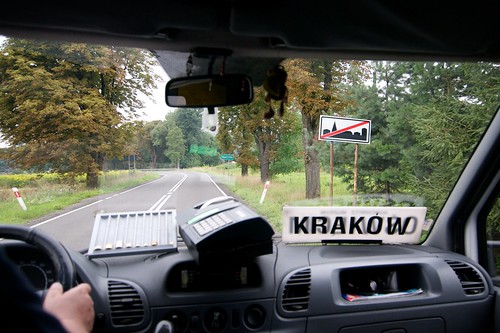
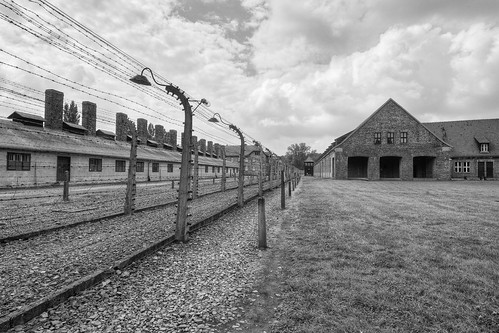

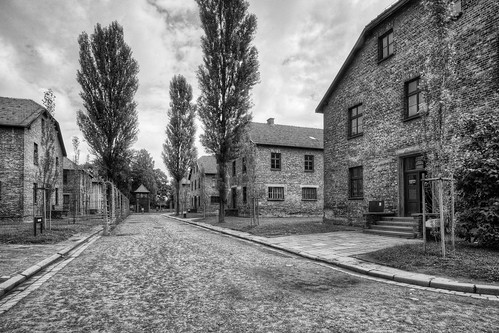
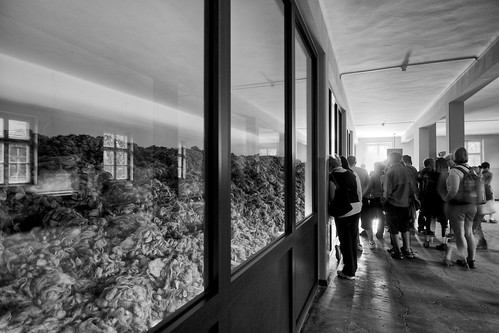
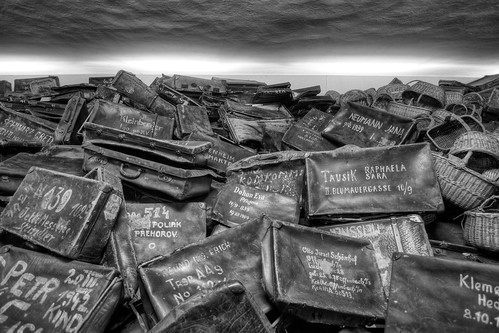
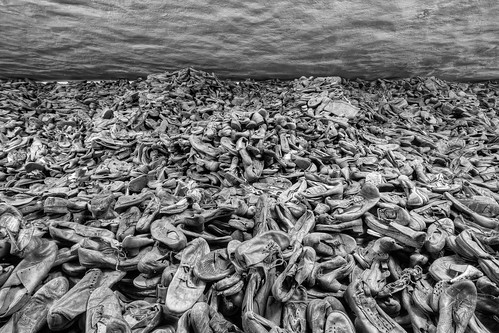
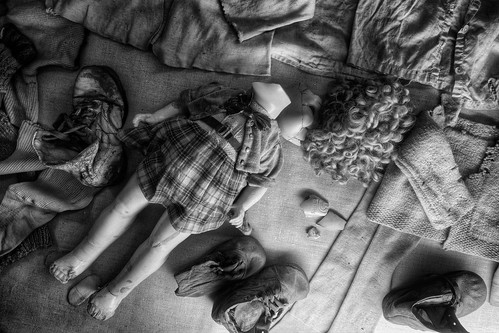



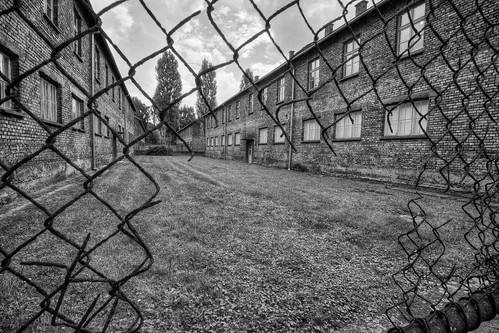

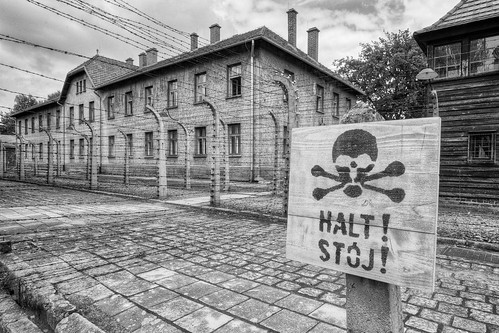

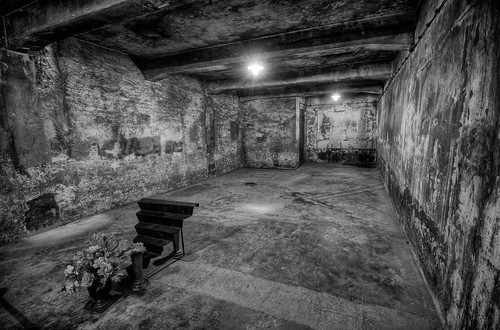
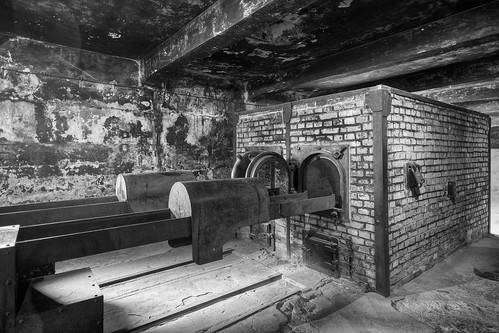
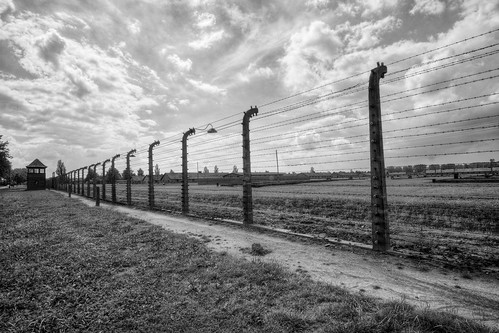
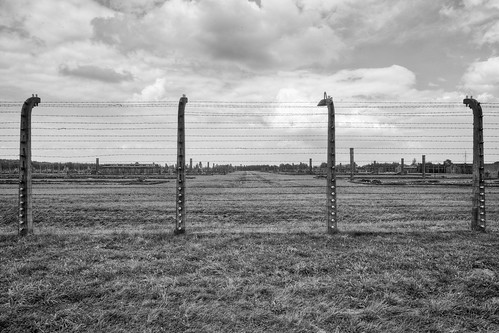
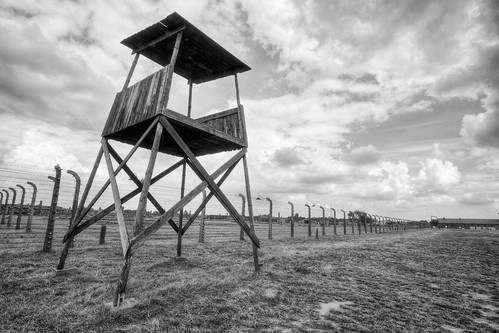
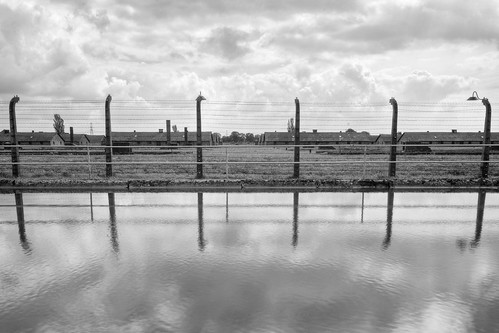
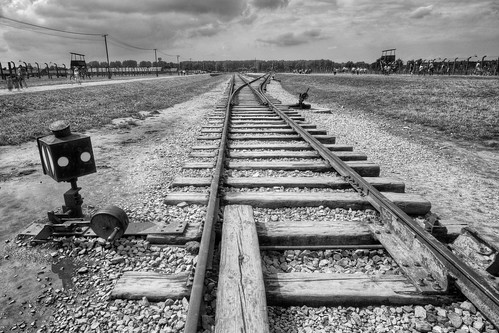
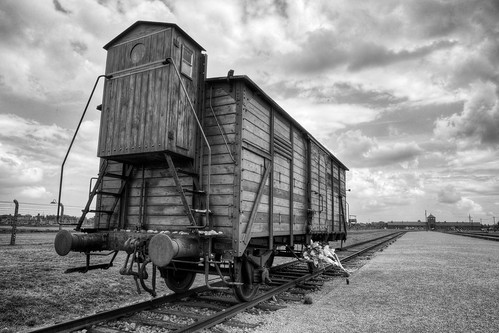
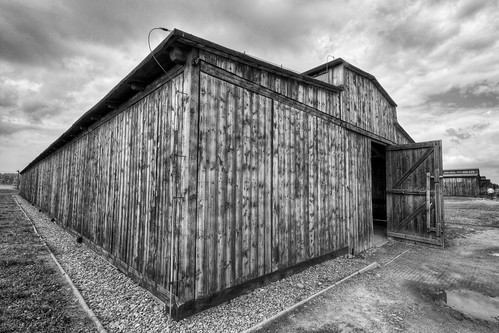
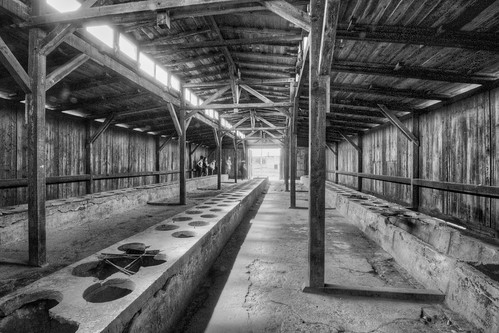
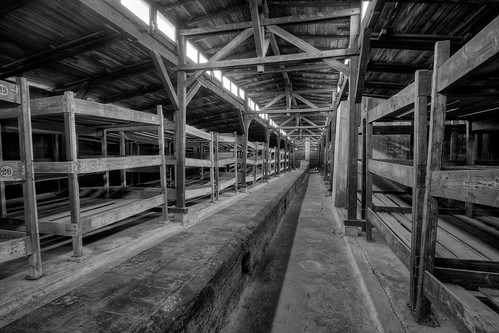
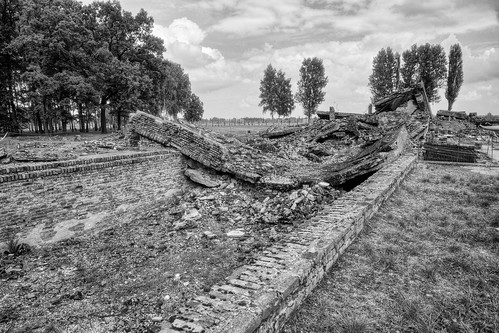
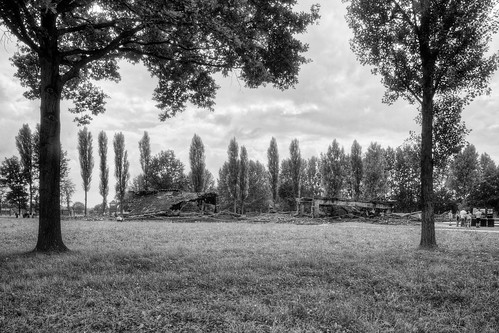
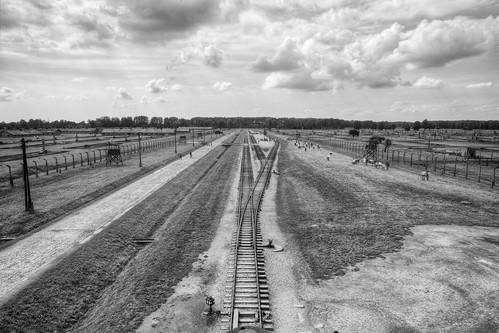
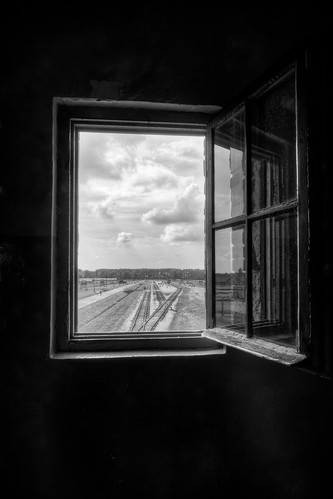


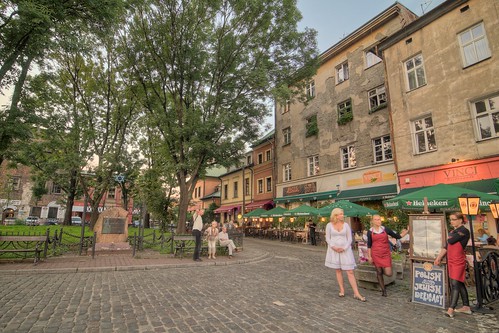
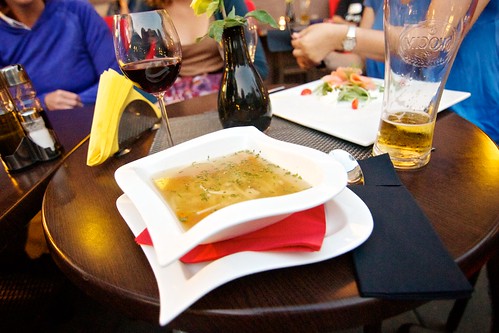
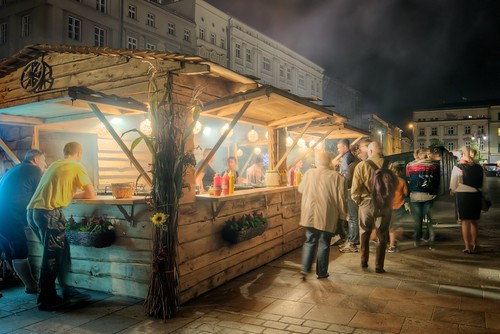

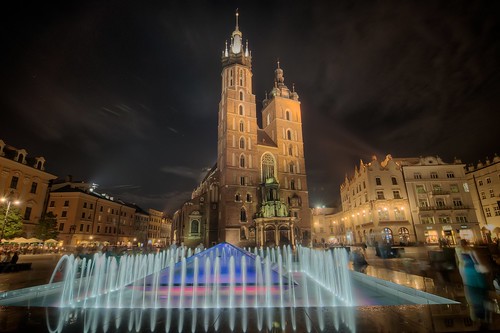
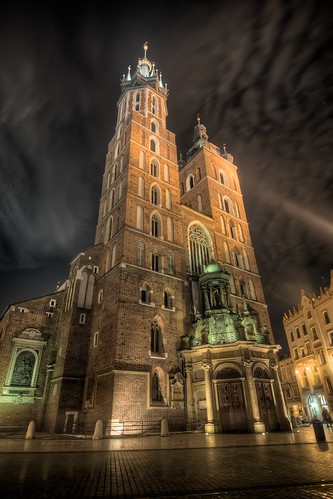
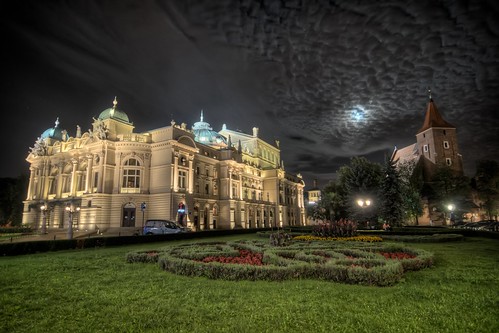
 My name is Jeff. I'm a
My name is Jeff. I'm a
2 Responses to “Auschwitz-Birkenau”
November 17th, 2012 at 1:48 am
Jeff you have provided an respectful insight into our visit to Auschwitz, I am proud to be part of your experience and photo presentation, in memory of those that died and suffered beyond our imagination. I will never forget this day…
December 1st, 2020 at 11:34 am
God rest the souls of the thousands lost in the camps. History shows that we are no less able to perpetrate these crimes against one another, hopefully, we are wise enough to not allow our governments to act in this way.